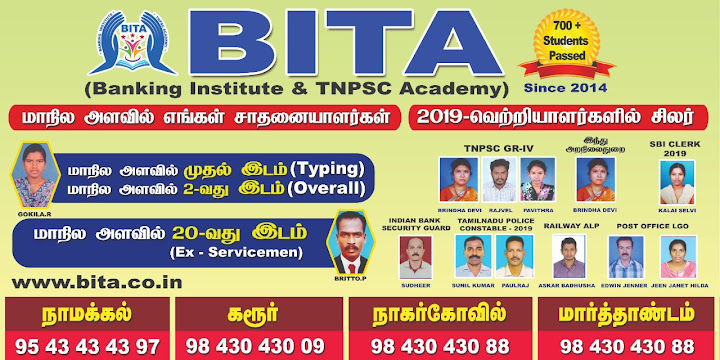Directions (Q.1-10): Read the following passage carefully and answer the questions given below. Certain words/phrases have been printed in bold to help you locate them.
With the Indian economy not picking up speed as was being anticipated, the spotlight is on the banking industry. It has been asked why the industry has been reluctant to pass on the double-dose rate reduction effected by the Reserve Bank of India in twin installments outside the policy cycle this year. The answer is not difficult to find. The rising load of bad loans has put banks — especially those in the public sector — in a pincer-like situation. A combination of factors saw gross Non Performing Assets drop from a high of 12 per cent in 2000-01 to 2.5 per cent in 2008-09. These factors included an improved economy, the establishment of debt recovery tribunals, and the enactment of the Securitisation and Reconstruction of Financial Assets and Enforcement of Security Interest Act, 2002. But the trend was reversed and the figure rose to 4.6 per cent in September 2014. An estimate by rating agency Crisil suggests that ‘stressed assets’ could stay flat at 6 per cent in 2015-16. And Crisil put the value of such assets at a mind-boggling Rs.5.3 trillion. RBI Governor Raghuram Rajan has said he isn’t quite sure if the banking system has seen the peak yet in bad loans. Since public sector banks account for two-thirds of all banking activity, it is turning out to be a huge worry.
Are bad loans a transitory phenomenon, or are they a chronic problem? If it indeed is a transitory issue, it should slowly evaporate as the economy picks up. If they are the consequence of systemic ills, then the solution lies in fixing the causes. If the economic slowdown is a part of the problem, scam-induced, court-ordained interventions in vital sectors such as coal, mining and telecom have added to the banks’ misery with bad loans. The stressed banks are wary of fresh lending. The need for stricter provisioning in view of the new Basel stipulations will add to their problems. Moreover, banks will no longer be allowed to treat restructured loans as standard ones. The revamped 5/25 scheme is essentially meant toremedy the situation. It allows banks to rejig long-term infrastructure loans by refinancing or selling loans every five years. But the scheme will at best mask stressed assets since banks need not report such loans. Bad loans have put the government in a moral predicament. Can it use the taxpayers’ money to nurse the banks back to health? Besides putting in place a watertight loan appraisal mechanism, the situation calls for a new framework outside the normal banking system to address the funding needs of long-term projects. Bad loans bode ill not just for banks but also the economy. The issue needs to be addressed with the utmost priority.
-Source The Hindu, Delhi Edition, 21st May
Q.1. Choose an appropriate title for the passage.
1) Interventions in Banking Activities
2) Asset Recovery by Banks
3) Asset and NPA
4) Bad Loans are Bad News
5) None Of these
Q.2.Which remark of the Governor of RBI is a huge worry for the Economy of our country?
A) The stressed assets could stay flat at 6 per cent in 2015-16.
B) Indian banking system has not seen its worst phase yet.
C) The value of NPA in the year 15-16 is going to be 5.3 trillion.
1) Only A
2) Only C
3) Only B
4) Only A and C
5) Only B and C
Q.3.Which of the following is true according to the passage?
A) The rising burden of bad loans, especially on public sector, has put them in a difficult situation.
B) CRISIL has alarmed about the rising trend of Indian economy to the Govt.
C) Banks will no longer be allowed to treat restructured loans as standard ones
1) Only A
2) Only B
3) Only C
4) Only A and C
5) All A, B and C
Q.4.What solution did the author offer if this rising NPA is a transitory phenomenon?
1) The author has not offered any solution but suggested that it will go away on its own when international market stabilizes.
2) The author has not offered any solution but suggested that it will go away on its own when Indian economy picks.
3) This situation is on its own and it doesn’t matter what we do, and what we try, it will only go away if the political situation stabilizes.
4) All of the above
5) None of the above
Q.5. What does the author mean by the phrase “If they are the consequence of systemic ills”?
1) If they are the upshot of the faults in the system.
2) If they are the consequences of systematic steps taken by the RBI.
3) If they are the result of the steps taken in the time of economic slowdown.
4) If they are the outcome of the meeting held between Govt. and RBI.
5) None
Q.6.Which of the following is not the synonym of the word “remedy”?
1) Abjure
2) Harm
3) Bawdy
4) Canard
5) All of the above
Q.7.Which of the following is not the synonym of the word “reluctant”?
1) Denizen
2) Deride
3) None
4) Willingness
5) Expatiate
Q.8.Which of the following is the synonym of the word “stipulations”?
1) Proviso
2) Stimulation
3) Fresco
4) Grouse
5) Homily
Q.9. Which of the following is the synonym of the word “predicament”?
1) Indolent
2) Mendicant
3) Laconic
4) Paucity
5) Quandary
Q.10. Which of the following is the synonym of the word “bode”?
1) Augur
2) Presage
3) Portend
4) Foretell
5) All of the above
1. (4)
2. (3)
3. (4)
4. (2)
5. (1)
6. (2)
7. (4)
8. (1)
9. (5)
10. (5)
2. (3)
3. (4)
4. (2)
5. (1)
6. (2)
7. (4)
8. (1)
9. (5)
10. (5)


No comments:
Post a Comment